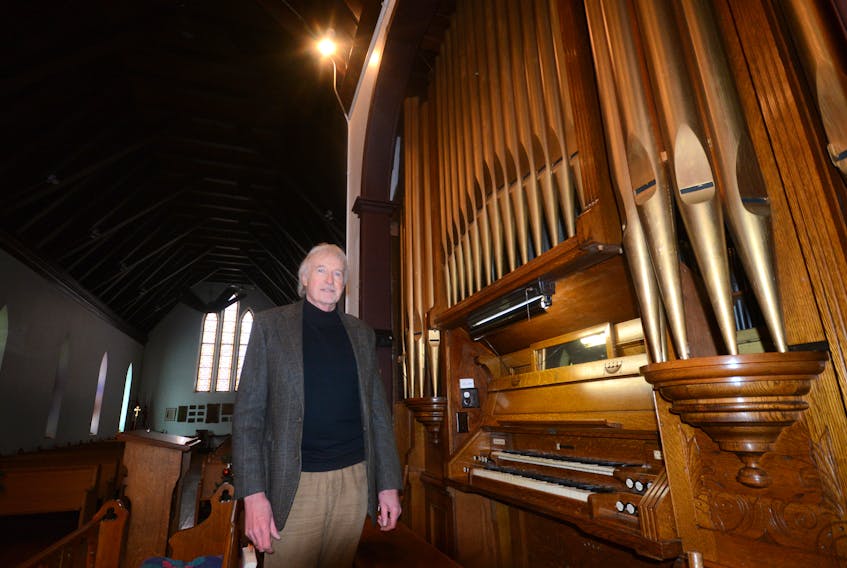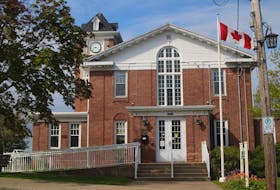PARRSBORO, N.S. – Installed in 1899, the pipe organ at St. George’s Anglican Church in Parrsboro was recently declared a “Historical Instrument” by the Historic Organ Committee of the Royal Canadian College of Organists.
“I like playing it very much but it takes a while to get used to because it’s a tracker organ,” said John McIntyre, organist at St. George’s since 2015. “It’s entirely mechanical, so it requires a lot more pressure on the keys.”
McIntyre said tracker organs were once very common but are rare today because most pipe organs have been updated with electrical components or have been replaced entirely by electronic instruments.
The only update on the St. George’s organ occurred in the 1930’s, when the hydraulic motor used to power the bellows was replaced with an electric motor.
McIntyre says the hydraulic motor was not always dependable.
“The water sometimes froze and, if the train was taking on water at the same time, the pressure was drastically reduced, making it necessary to pump the blower by hand,” said the 67-year-old.
A hydraulic motor also meant that somebody worked behind the organ to activate it and keep it running.
“One of these stops here was the bellows signal,” said McIntyre, pointing to a knob on the front of the organ.
“So originally, if the organist was about to play something they would pull that stop and it would raise a little flag in back room,” added McIntyre. “Then the bellows boy, who would either be hand pumping or would be starting the hydraulic motor, would know you were starting.”
The St. George’s organ has about 500 pipes made of both wood and lead.
“The smallest pipe is about an inch, it’s made of lead, and the tallest is 16 feet, which is made of wood,” said McIntyre. “The wooden pipes give a much deeper tone, and the lead pipes give a much brighter tone.”
The organ was built by D.W. Karn and Company in Woodstock, Ont.
“Dennis W. Karn had built a strong reputation as one of Canada’s largest builders of reed organs,” said McIntyre. “In 1896, he partnered with Charles Sumner Warren of Montreal and Toronto who came from one of Canada’s pre-eminent pipe organ building families. Under the name of Karn-Warren, the company built St. George’s organ.”
The Royal Canadian College of Organists is a national body which will be holding its 2019 festival in Halifax from July 7 to 11.









